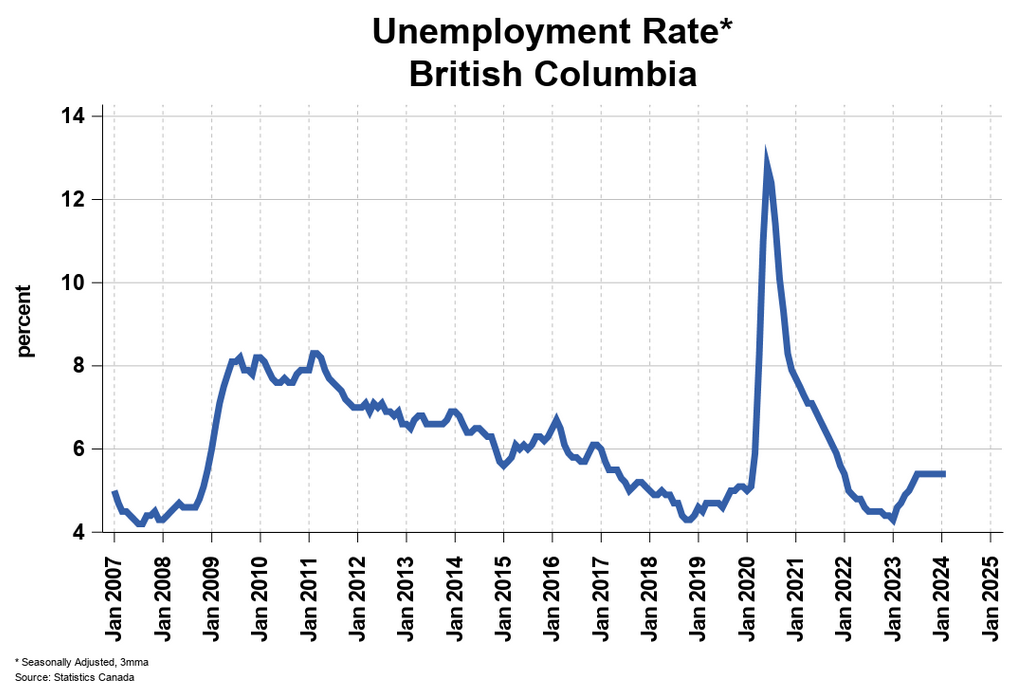Kootenay unemployment rate hits new low with high rate
The Kootenay region has surged to the top of the bottom of the unemployment rate race.
Between the West and the East, the unemployment rate for the region is a combined 6.8 per cent, the highest in the province and the fifth highest amongst economic regions across the country — outside of the Maritimes and the territories — according to Statistics Canada.
One year ago the region was one of the lowest in the nation at a measly 2.9 per cent, but 12 months later the rate of unemployed people in the Kootenays — which includes Nelson, Castlegar, Trail, Cranbrook and Grand Forks — has steadily risen.
The unemployment rate in British Columbia was 5.3 per cent in February, down 0.1 percentage points from January and up 0.7 percentage points from 12 months ago.

In February, both the labour force (up 29,000) and the number of people employed (up 17,700) increased on a month-over-month basis, while over the past 12 months it grew by 122,800 and 74,000, respectively.
There were 4,700 more full-time jobs in February 2024 compared to a month earlier. A gain of 1,800 part-time positions led to an increase of 6,500 total jobs in February.
Full-time employment has recovered since reaching a bottom in August 2023 and now stands at a record high.
At 5.3 per cent, B.C. had the fifth lowest unemployment rate in Canada during the month of February, with only Manitoba (4.5 per cent), Quebec (4.7 per cent), Saskatchewan (five per cent) and the Yukon (3.9 per cent) ahead of B.C.

Home work
Nearly four years ago, the pandemic brought on an unprecedented increase in the number of Canadians who work from home.
While the proportion of Canadians working from home has decreased considerably from the peak of 41.1 per cent reached in April 2020, working remotely continues to be an important part of the weekly work routine for many Canadians.
In February 2024, 13.5 per cent of workers usually worked exclusively from home and a further 11.4 per cent had a hybrid arrangement — working some hours at home, and some hours at locations other than home (population aged 15 to 69, not seasonally adjusted).
Compared with November 2023 — the last time information on work location was collected in the Labour Force Survey — the share of workers who usually work exclusively from home was up slightly (+0.9 percentage points), and the proportion of hybrid workers was little changed.
The proportion working at least some of the time from home in February 2024 was higher among women (27.8 per cent) than among men (22.4 per cent).
Working from home — either exclusively or as part of a hybrid arrangement — is notably higher among self-employed workers. In February 2024 more than four in 10 self-employed workers (42.6 per cent) indicated that they usually worked at least some of the time from home.
Public sector employees (25.9 per cent) were also more likely to work from home than private sector employees (21.3 per cent).
Consistent with patterns observed since the start of the pandemic, the share of workers who either worked exclusively from home or had a hybrid arrangement was highest in professional, scientific, and technical services (60.6 per cent), finance, insurance, real estate, rental and leasing (54.4 per cent) and public administration (47.4 per cent) in February 2024.
Source: Statistics Canada, The Daily


























